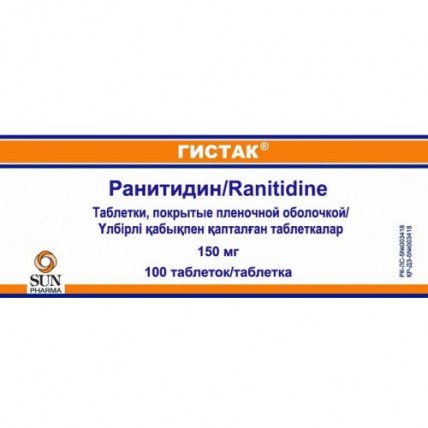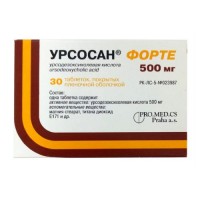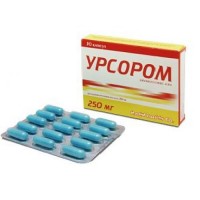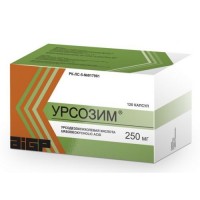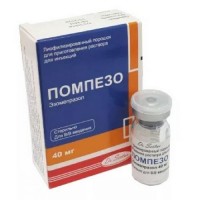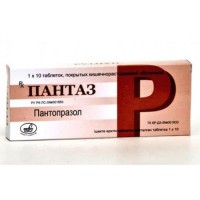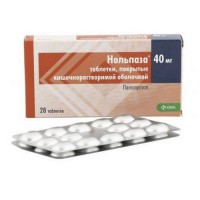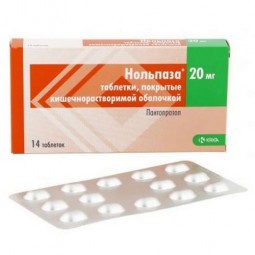Gistak 100s 150 mg film-coated tablets
- $12.60
Out Of Stock
The instruction for medical use of Gistak® medicine the Trade name of Gistak® the International unlicensed name Ranitidine Dosage Form of the Tablet, film coated, 150 mg Structure One tablet contains active agent – ranitidine of a hydrochloride of 167.50 mg (it is equivalent to ranitidine of 150 mg), excipients: microcrystalline cellulose, sodium of a kroskarmelloz, silicon dioxide colloidal anhydrous, magnesium the stearate, talc purified structure of a cover: a gipromelloza, ethyl cellulose, castor oil, the titan E171 dioxide, talc purified. The description of the Tablet of round shape, with a biconvex surface, film coated white or almost white color, with an engraving of HISTAC 150 on one party and RANBAXY on another. Pharmacotherapeutic group Antiulcerous drugs and drugs for treatment of a gastroesophageal reflux. H2 blockers - histamine receptors. Ranitidine. The ATX A02BA02 code the Pharmacological Pharmacokinetics Absorption Later properties of intake ranitidine is quickly soaked up from digestive tract. The bioavailability is about 50%. Peak concentration in plasma are noted in 2-3 h after intake in a dose 150 mg and make 440-545 ng/ml. Meal does not influence extent of absorption. Distribution the Volume of distribution is about 1.4 l/kg. Linking with proteins of plasma averages 15%. Metabolism the Main metabolite found in urine - N-oxide (& lt, 4% of a dose), in smaller quantities is formed S-oxide (1%) and desmetil-ranitidine (1%). All these metabolites are pharmacological inactive. The rest is excreted with excrements. It is allocated with breast milk. Gets through a placental barrier. Removal Is removed mainly by kidneys by canalicular secretion. The renal clearance is about 410 ml/min. About 30% of drug are removed from an organism in an invariable look in 24 hours. Elimination half-life makes 2.5-3 hours. Geriatrics Plasma elimination half-life is extended and the general clearance is reduced at elderly because of decrease in renal function. Elimination half-life at elderly makes 3-4 hours. Peak levels average 526 ng/ml after a dose of 150 mg two times a day and arise approximately in 3 hours. The pharmacodynamics Gistak is a blocker of H2-histamine receptors of covering cells of a mucous membrane of a stomach. Ranitidine does not lower serumal Ca ++ at hyper calcemic states. Ranitidine is not anticholinergic. Inhibits basal and stimulated secretion of hydrochloric acid, reducing both the volume, and content of acid and pepsin in gastric juice. Гистак® has rather big duration of action therefore reception of 1 tablet (150 mg) effectively oppresses secretion of hydrochloric acid within 12 hours. Concentration in serum, 50% of stimulated secretion of hydrochloric acid, necessary for inhibition, presumably make from 36 to 94 ng/ml. After a single oral dose of 150 mg, concentration of ranitidine in serum are in this range till 12 o'clock. However, levels in blood have no resistant relation to a dose or degree of inhibition of hydrochloric acid. Anti-secretory activity 1. Impact on secretion of hydrochloric acid: Гистак® inhibits both day, and night basal secretion of hydrochloric acid and also suppresses the secretion of hydrochloric acid in a stomach stimulated by food, betazoly, Pentagastrinum, as shown in the table below. Table 2. Impact of oral ranitidine on secretion of gastric acid. In Time after a % % dose inhibition of volume of gastric acid a dose of 75 - 75 - 80 mg 10,100 mg 15,150 mg 20,200 mg of Bases basal Till the 4th o'clock of 99 99% of 95 95% But night Till 13 o'clock 95 95% of 96 96% of 92 92% of Hectare of the beta evils Till the 3rd o'clock of 97 97% of 99 99% of Pe Pentagastrinum Till 5 o'clock 58 58% of 72 72% of 72 72% of 80 80% of Pi food Till the 3rd o'clock of 73 73% of 79 79% of 95 95% are obvious that basal and night secretions and also stimulated betazoly, are the most sensitive to inhibition ranitidine, reacting almost completely to doses of 100 mg or less while stimulated Pentagastrinum and food it is the most difficult for secretion to suppress. 2. Impact on other gastrointestinal secretions: Pepsin: Гистак® does not influence pepsinia. The total amount of pepsin decreases in proportion to decrease in volume of gastric juice. Internal factor: Гистак® does not make considerable impact on secretion of an internal factor stimulated Pentagastrinum. Serumal gastrin: Gistak makes insignificant impact on serumal gastrin on an empty stomach or after meal. Indications - treatment and prevention of exacerbations of a peptic ulcer of a stomach and duodenum - treatment of morbid hyper secretory conditions (Zollingera-Ellison's syndrome, a system mastocytosis, chronic incidental dyspepsia) - a gastroesophageal reflux disease - an erosive esophagitis - treatment and prevention of the erosion and stomach ulcers or a duodenum caused by intake of non-steroidal anti-inflammatory drugs - prevention of gastric bleeding in stressful stomach ulcers at seriously ill patients - prevention of development of acid aspiration (Mendelssohn's syndrome) before the general anesthesia, especially at the sorts Route of administration and doses Inside the adult, Gistak® accept irrespective of meal time, swallow of a tablet entirely, washing down with a small amount of water. Peptic ulcer of a stomach and duodenum Treatment of aggravations: on 150 mg 2 times a day (in the morning and in the evening) or 300 mg for the night. In most cases stomach ulcer and a duodenum heal within 4 weeks. At patients the healing usually happens to the ulcers which did not cicatrize for this term against the background of continuation of treatment within the next 4 weeks. Prevention of aggravations: on 150 mg before going to bed. Prevention at a reduced dosage of 150 mg is before going to bed recommended to the patients who reacted to short-term therapy, especially to patients with a recurrent ulcer in the anamnesis. The erosion and stomach ulcer and a duodenum connected with reception of NPVP Treatment: on 150 mg 2 times a day or 300 mg of 1 times a day (for the night) within 8 weeks. At treatment of a peptic ulcer of a stomach and duodenum, 300 mg connected with NPVP administration of drug in a dose 2 times a day within 4 weeks is more effective, than reception of doses on 150 mg 2 times a day or 300 mg of 1 times for the night within 4 weeks. Increase in a dose does not lead to increase in frequency of emergence of side effects. Prevention of formation of the erosion and ulcers connected with reception of NPVP: on 150 mg 2 times a day along with use of non-steroidal anti-inflammatory drugs. Zollingera-Ellison's syndrome: the initial dose makes 150 mg 2 times a day or 300 mg for the night. If necessary the dose can be increased up to 6 g a day. Gastroesophageal reflux disease: a therapeutic dose on 150 mg 2 times a day or 300 mg for the night. Erosive esophagitis: the recommended oral dose of Gistak® makes 150 mg 2 times a day. At patients with a severe form of an esophagitis a ranitidine dose the dose can be increased up to 150 mg 4 times a day. Chronic incidental dyspepsia: Гистак® appoint 150 mg 2 times a day for 6 weeks. In case of lack of positive effect from treatment and also in case of aggravation of symptoms against the background of treatment it is necessary to perform careful examination. Prevention of bleedings from stressful ulcers: at seriously ill patients of patients after the patient is able to eat food through a mouth, parenteral use of ranitidine can be replaced with appointment Gistak inside in a dose of 150 mg 2 times a day. Prevention of development of a syndrome of Mendelssohn: 150 mg in 2 hours prior to anesthesia and also, are desirable, 150 mg the night before. As an alternative it is possible to use a ranitidine injection. Women in labor during childbirth need to accept 150 mg each 6 hours, but if the general anesthesia is required it is recommended to accept in addition not disperse antacid (e.g., sodium citrate). It is necessary to watch patients in order to avoid aspiration by acid contents of a stomach. Use in a renal failure is recommended to Patients with reduced renal function (clearance of creatinine less than 50 ml/min.) a daily dose of 150 mg of ranitidine. Elderly patients have a high probability of reduced renal function therefore it is necessary to appoint a dose with care and to control renal function, at the level of creatinine & gt, 3.3 mg/dl – on 75 mg 2 times a day. The patients who are exposed to a hemodialysis should accept 150 mg of ranitidine right after dialysis as as a result of a hemodialysis its concentration in blood decreases. Side effects Often - nausea, vomiting, discomfort, an abdominal pain, a constipation, diarrhea Seldom - dizziness, drowsiness, insomnia, confusion of consciousness, concern, a depression, a hallucination (mainly at seriously ill and elderly patients) - illegibility of sight which can be connected with accommodation change - reversible involuntary movements - arrhythmias, such as tachycardia, bradycardia, arterioventrikulyarny blockade, premature ventricular contraction - pancreatitis, hepatocellular, cholestatic hepatitis with jaundice or without, a liver failure, increase in activity of ALT, increase in creatinine of blood serum - an arthralgia, myalgia - a leukopenia, a granulocytopenia, thrombocytopenia, an agranulocytosis, a pancytopenia, aplastic anemia - a giperprolaktinemiya, a galactorrhoea, an amenorrhea, a gynecomastia, decrease in potency at men - allergic reactions: rash, a polymorphic erythema, a small tortoiseshell, a bronchospasm, a Quincke's disease - hypotonia, thorax pains - fever - an alopecia - a vasculitis Very seldom - a headache (sometimes strong) - an acute anaphylaxis - hemolytic anemia - interstitial nephrite of the Contraindication - hypersensitivity to ranitidine or other components of drug - a sharp porphyria (including in the anamnesis) - pregnancy and the period of a lactation - children's and teenage age up to 18 years Medicinal interactions of Gistak® has ability to influence absorption, metabolism or renal excretion of other drugs. The changed pharmacokinetics can cause dose adjustment of necessary drug or the termination of intake of ranitidine. It is noted that ranitidine affects bioavailability of other drugs by means of several different mechanisms, such as competition for renal canalicular secretion, change gastric rn and inhibition of P450 enzymes of cytochrome. Inhibition of a system of oxygenase with the mixed function connected with P450 cytochrome: there are data that ranitidine at therapeutic doses oppresses metabolism of the drugs inactivated by this fermental system such as diazepam, lidocaine, dipheninum, propranolol, theophylline, metronidazole, Buforminum, etc. Competition for renal canalicular secretion: as ranitidine is partially removed by a cationic system, it can affect clearance of other drugs removed in the same way (e.g., digoxin, morphine, procaineamide, quinidine, quinine, Triamterenum, Trimethoprimum, Vancomycinum, etc.). Change gastric rn: Гистак® can change absorption of drugs at which gastric rn is important determinant of bioavailability. The bioavailability of certain drugs can be broken. It can cause or increase in absorption (e.g., to triazoles, midazolam, glipizid), or decrease in absorption (e.g., ketokonazol, atazanavir, delaviridin, gefitinib). The corresponding clinical observation is recommended. Procaineamide: ranitidine, substrate of the renal organic cationic transport system, can affect clearance of other drugs removed in the same way. High doses of Gistaka® (e.g., such which are used at treatment of a syndrome of Zollingera-Ellison) showed the decrease in renal excretion of procaineamide and N-atsetilprokainamida, metoprolol leading to the increased levels of these drugs in plasma. Though this interaction is improbable has clinical value at usual doses of Gistaka®, it is reasonable to reveal toxicity of procaineamide at simultaneous introduction with oral ranitidine in doses higher than 300 mg a day. Warfarin: there are messages about the changed prothrombin time among patients at the accompanying therapy by warfarin and ranitidine. Careful observation of changes of a prothrombin time at the accompanying treatment is recommended by ranitidine. Atazanavir: absorption of an atazanavir can be reduced on the basis of the known interactions with other drugs raising gastric rn. To use with care (see the instruction of an atazanavir). Delavirdin: absorption of a delavirdin can be weakened on the basis of the known interactions with other drugs raising gastric rn. Constant use of antagonists of H2 receptors with delavirdiny is not recommended. Gefitinib: influence of a gefitinib is reduced by 44% at simultaneous administration of ranitidine and sodium bicarbonate (it is dosed for maintenance gastric rn higher than 5.0). To use with care. Glipizid: at patients with diabetes, influence of a glipizid increased by 34% after reception of single 150 mg of a dose of oral ranitidine. It is necessary to make clinical observation before the beginning and the termination of intake of ranitidine. Ketokonazol: influence of an oral ketokonazol decreased to 95% at the accompanying administration of oral ranitidine at the mode for maintenance gastric rn on 6 and above. Extent of interaction with a usual dose of ranitidine (150 mg 2 times a day) is unknown. Midazolam: influence of oral midazolam increased at introduction with oral ranitidine doses on 150 mg 2 times a day. It is necessary to observe patients on presence of excess or long sedation at simultaneous introduction with oral midazolam. To triazoles: influence of a triazolam increased approximately by 30% at introduction with oral ranitidine doses on 150 mg 2 times a day. It is necessary to observe patients on presence of excess or long sedation. At a concomitant use with antacids, sukralfaty in high doses the ranitidine absorption disturbance is possible therefore the interval between intake of these drugs has to make not less than 2 h. The medicines oppressing marrow increase risk of a neutropenia and other cytopenias. Intake of ranitidine with theophylline can cause increase in concentration of theophylline in plasma with the advent of side effects – tachycardias, spasms, uneasiness. Simultaneous use of ranitidine and alcohol promotes increase in blood alcohol level. Smoking reduces efficiency of ranitidine. Signs of interaction between ranitidine and amoxicillin or metronidazole are absent. Special instructions before use of drug it is necessary to exclude a possibility of existence of malignant process of a gullet, stomach or duodenum at patients with stomach ulcer (and also if indications include dyspepsia, at patients of middle age and is more senior, with the new or recently appeared dyspepsia symptoms) as treatment by ranitidine can hide symptoms of a malignant disease. As ranitidine is removed, mainly, by kidneys, it is necessary to adjust a dosage at patients with reduced renal function. It is recommended to reduce a drug dose. In case of need the treatment terminations cancel drug, gradually reducing a dose, in order to avoid danger of a recurrence of a peptic ulcer. It is necessary to be careful at patients with liver dysfunction as ranitidine is metabolized in a liver. Regular observation of the patients taking non-steroidal anti-inflammatory drugs along with ranitidine, especially at elderly patients and at patients with a round ulcer in the anamnesis is recommended. At elderly, patients with chronic diseases of lungs, diabetes or with immune insufficiency, there can be an increased risk of developing pneumonia. The tablets Gistak contain castor oil as excipient which can cause indigestion and diarrhea. Protein tests in urine with use of a colorimetric method can yield false positive results during therapy by ranitidine therefore
the estirovaniye by means of sulphosalicylic acid is recommended. Geriatrics It is known that ranitidine is substantially removed by kidneys and the danger of toxic reactions to this drug can be higher at patients with reduced renal function. As elderly patients have a high probability of reduced renal function, it is necessary to appoint a dose with care, it is also necessary to control renal function. The feature of influence of medicine on ability to run the vehicle or potentially dangerous mechanisms during treatment needs to refrain from occupations potentially dangerous types of activity demanding the increased concentration of attention and speed of psychomotor reactions. Overdose Symptoms: change of gait, hypotonia, bradycardia, ventricular arrhythmias, spasms Treatment: gastric lavage, symptomatic and maintenance therapy, at development of spasms — in/in diazepam, in bradycardia — atropine, in ventricular arrhythmias — lidocaine. The hemodialysis is effective. The form of release and packing On 10 tablets place in planimetric bezjyacheykovy packing from aluminum foil. On 10 planimetric bezjyacheykovy packs together with the instruction for medical use in the state and Russian languages put in a pack from cardboard. To Store storage conditions in the dry, protected from light place at a temperature not over 25 ºС to Store out of children's reach! 3 years not to use a period of storage after expiry date. Prescription status According to the prescription Sun Pharmaceutical Ind Ltd Producer, India Industrial Area-3 Dewas-455001 the Name and the country of the owner of the registration certificate of Sun Pharmaceutical Ind Ltd, India the Address of the organization accepting in the territory of the Republic of Kazakhstan claims from consumers on quality of products (goods) and responsible for post-registration observation of safety of medicine 050004, Almaty, Manas St. 32 And, Business center SAT 6 the floor, office 602, Ph. (727) 250-92-35, fax (727) 250-33-64 regulatory.kz@sunpharma.comukovoditeartamenta of specialized examination of HP P.N. Deryabin. The deputy head of Department specialized
to Develop
the estirovaniye by means of sulphosalicylic acid is recommended. Geriatrics It is known that ranitidine is substantially removed by kidneys and the danger of toxic reactions to this drug can be higher at patients with reduced renal function. As elderly patients have a high probability of reduced renal function, it is necessary to appoint a dose with care, it is also necessary to control renal function. The feature of influence of medicine on ability to run the vehicle or potentially dangerous mechanisms during treatment needs to refrain from occupations potentially dangerous types of activity demanding the increased concentration of attention and speed of psychomotor reactions. Overdose Symptoms: change of gait, hypotonia, bradycardia, ventricular arrhythmias, spasms Treatment: gastric lavage, symptomatic and maintenance therapy, at development of spasms — in/in diazepam, in bradycardia — atropine, in ventricular arrhythmias — lidocaine. The hemodialysis is effective. The form of release and packing On 10 tablets place in planimetric bezjyacheykovy packing from aluminum foil. On 10 planimetric bezjyacheykovy packs together with the instruction for medical use in the state and Russian languages put in a pack from cardboard. To Store storage conditions in the dry, protected from light place at a temperature not over 25 ºС to Store out of children's reach! 3 years not to use a period of storage after expiry date. Prescription status According to the prescription Sun Pharmaceutical Ind Ltd Producer, India Industrial Area-3 Dewas-455001 the Name and the country of the owner of the registration certificate of Sun Pharmaceutical Ind Ltd, India the Address of the organization accepting in the territory of the Republic of Kazakhstan claims from consumers on quality of products (goods) and responsible for post-registration observation of safety of medicine 050004, Almaty, Manas St. 32 And, Business center SAT 6 the floor, office 602, Ph. (727) 250-92-35, fax (727) 250-33-64 regulatory.kz@sunpharma.comukovoditeartamenta of specialized examination of HP P.N. Deryabin. The deputy head of Department specialized
to Develop
